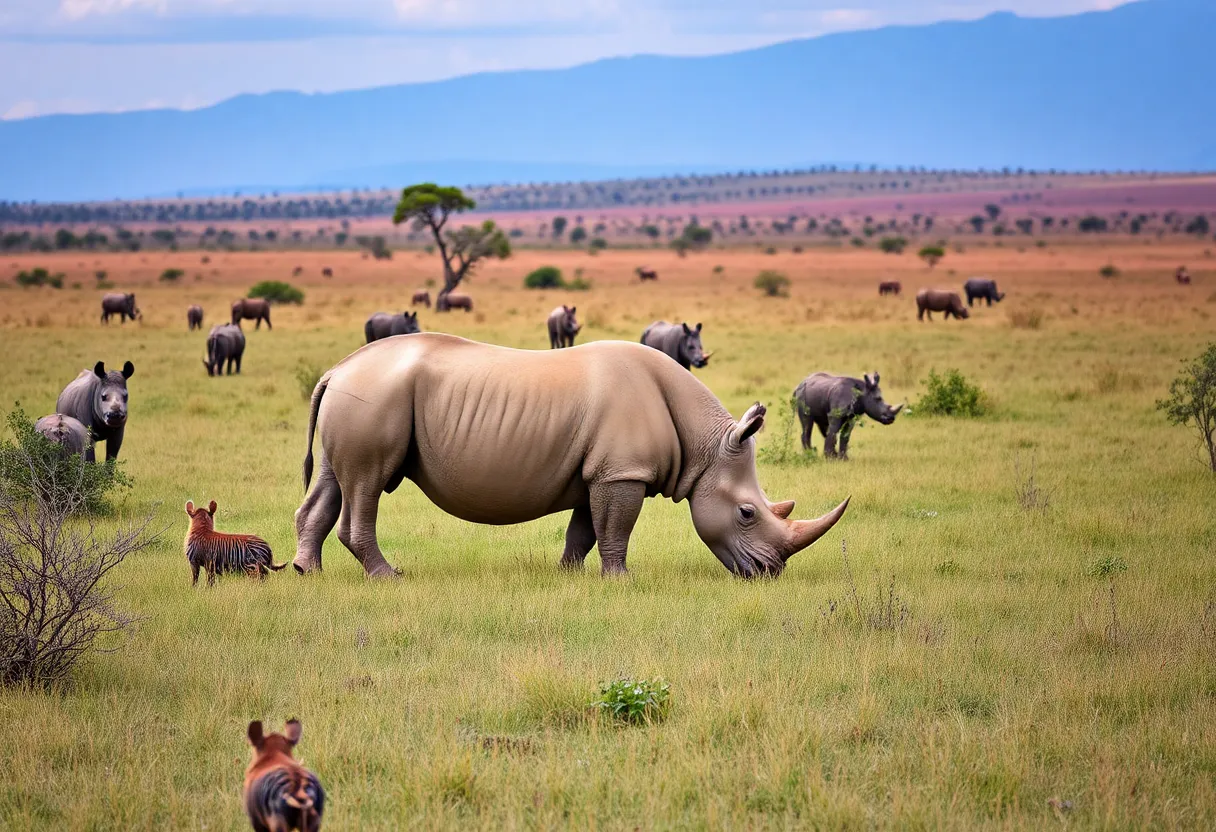Albuquerque, NM, October 16, 2025
Albuquerque’s BioPark announces the arrival of Lira, an 8-year-old female white rhino from South Africa. This significant milestone in wildlife conservation highlights the park’s commitment to protecting vulnerable species from poaching. Lira underwent a successful health check before joining the savanna exhibit, delighting visitors and enhancing educational opportunities about wildlife and habitat preservation.
Albuquerque BioPark Welcomes Rare White Rhino from South Africa
Albuquerque, NM – Albuquerque’s BioPark marked a significant milestone in wildlife conservation by introducing a rare white rhino from a wildlife preserve in South Africa. The 8-year-old female rhino, named Lira, arrived and completed a successful health check before being integrated into the savanna exhibit. This addition has already captured the attention of visitors, highlighting ongoing efforts to protect the vulnerable species facing global poaching threats.
The arrival of Lira represents a vital step in bolstering conservation programs at the BioPark. Staff ensured a thorough veterinary examination to confirm her well-being upon arrival, allowing her to join the exhibit without complications. Visitors have expressed excitement over the new resident, noting how it enhances the interactive experience in the savanna area.
Details of Lira’s Journey and Integration
Lira’s transport from the South African preserve involved careful planning to minimize stress and ensure safety. The process adhered to international wildlife relocation standards, focusing on the rhino’s acclimation to her new environment. At the BioPark, she now shares the savanna exhibit with other species, promoting natural behaviors and educational opportunities for the public.
The savanna exhibit, a key feature of the BioPark, simulates the African landscape where white rhinos thrive. Lira’s presence allows visitors to observe her grazing, socializing, and moving in a habitat designed to mimic her native terrain. This setup not only entertains but also educates on the importance of habitat preservation.
Conservation Impact Amid Poaching Challenges
White rhinos are classified as vulnerable by conservation organizations due to persistent poaching driven by demand for their horns in illegal markets. Lira’s relocation supports breeding programs aimed at increasing population numbers and genetic diversity. By hosting such animals, the BioPark contributes to global initiatives that combat these threats through awareness and research.
Officials emphasize that such introductions help fund anti-poaching efforts in Africa while providing a safe haven for at-risk individuals. The BioPark’s role in these programs underscores the need for continued international cooperation to address habitat loss and illegal hunting.
Visitor Experiences and Educational Value
Since Lira’s debut, the BioPark has seen an uptick in attendance, with families and wildlife enthusiasts flocking to the savanna exhibit. Interactive displays nearby explain the rhino’s biology, diet, and the challenges faced by the species. These elements make the visit both enjoyable and informative, encouraging visitors to support conservation causes.
Background on White Rhinos and the BioPark
White rhinos, known for their square-shaped mouths adapted for grazing, once numbered in the tens of thousands across Africa. Today, their populations are fragmented due to human activities and poaching. The Albuquerque BioPark, spanning diverse exhibits from aquariums to zoos, has long committed to species preservation. Lira’s arrival builds on previous successes in hosting endangered animals, reinforcing the facility’s mission to foster biodiversity.
The savanna exhibit itself spans several acres, featuring grasses, water sources, and viewing platforms that allow safe observation. Staff monitor Lira closely to ensure she adapts well, adjusting her diet and enclosure as needed. This careful approach exemplifies the BioPark’s dedication to animal welfare alongside conservation goals.
In the broader context, such relocations highlight the interconnectedness of global wildlife efforts. While Lira enjoys her new home in Albuquerque, her story serves as a reminder of the urgent need to protect wild populations. Visitors leaving the exhibit often carry a heightened appreciation for these majestic creatures and the work required to safeguard their future.
The BioPark continues to host daily tours and programs focused on rhinos and other vulnerable species. For those interested in contributing, options include membership programs and donation drives that directly support conservation initiatives. This event not only delights the local community but also amplifies the message of wildlife protection on an international scale.
FAQ
What is the key news about Albuquerque’s BioPark?
Albuquerque’s BioPark celebrated the arrival of a rare white rhino from a wildlife preserve in South Africa. The 8-year-old female, named Lira, underwent a successful health check and joined the savanna exhibit, delighting visitors.
Why is this arrival important for conservation?
Officials say this bolsters conservation efforts for the vulnerable species amid global poaching threats.
Where did the white rhino come from?
The white rhino came from a wildlife preserve in South Africa.
What is the name and age of the new rhino?
The 8-year-old female rhino is named Lira.
What exhibit will the rhino join?
Lira joined the savanna exhibit.
How has Lira’s arrival affected visitors?
The arrival has delighted visitors and enhanced the interactive experience in the savanna area.
Key Features Chart: Lira the White Rhino
| Feature | Details |
|---|---|
| Name | Lira |
| Age | 8 years old |
| Gender | Female |
| Origin | Wildlife preserve in South Africa |
| Current Location | Savanna exhibit at Albuquerque BioPark |
| Conservation Status | Vulnerable species |
| Key Impact | Bolsters conservation efforts amid poaching threats |





